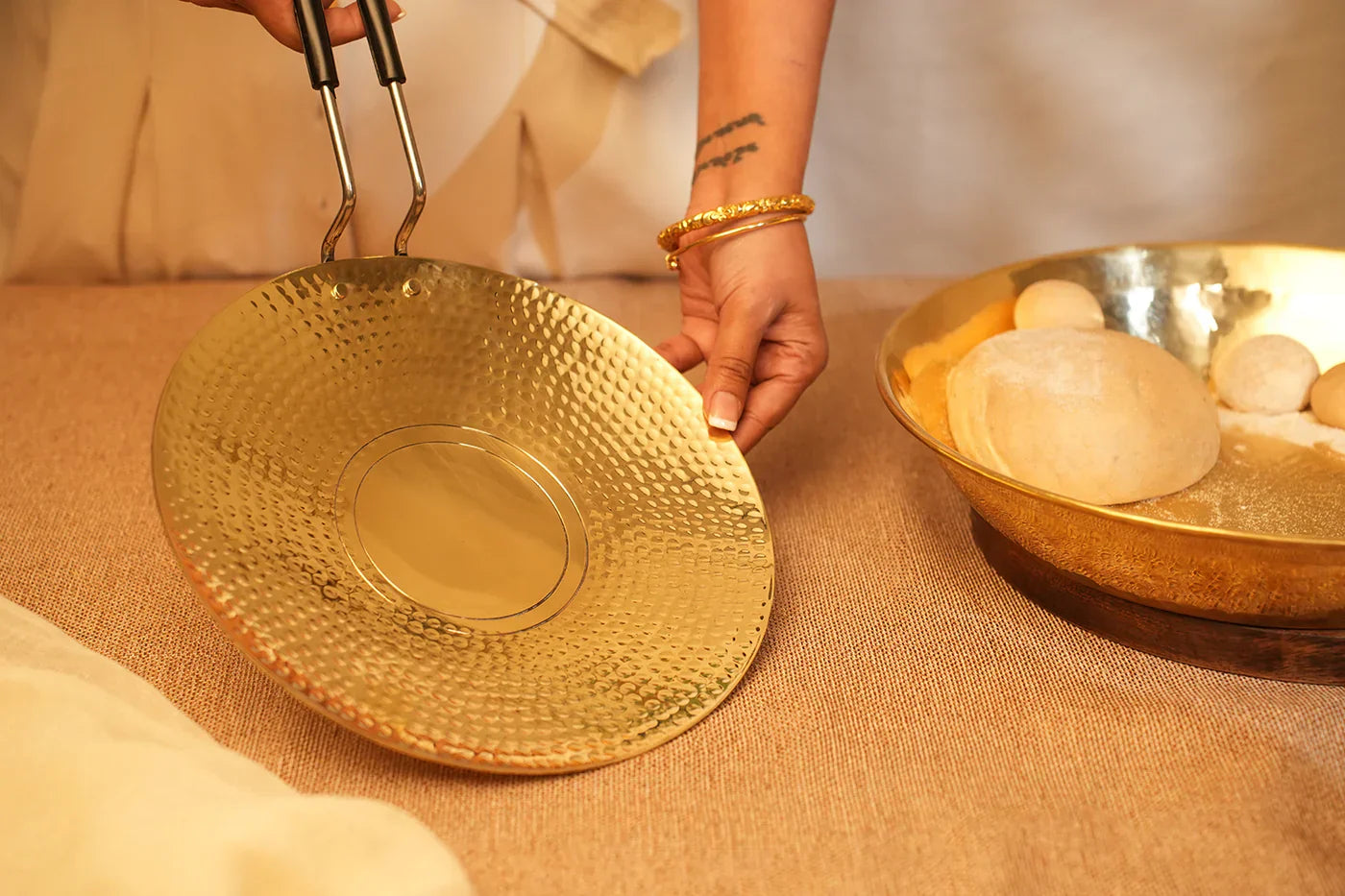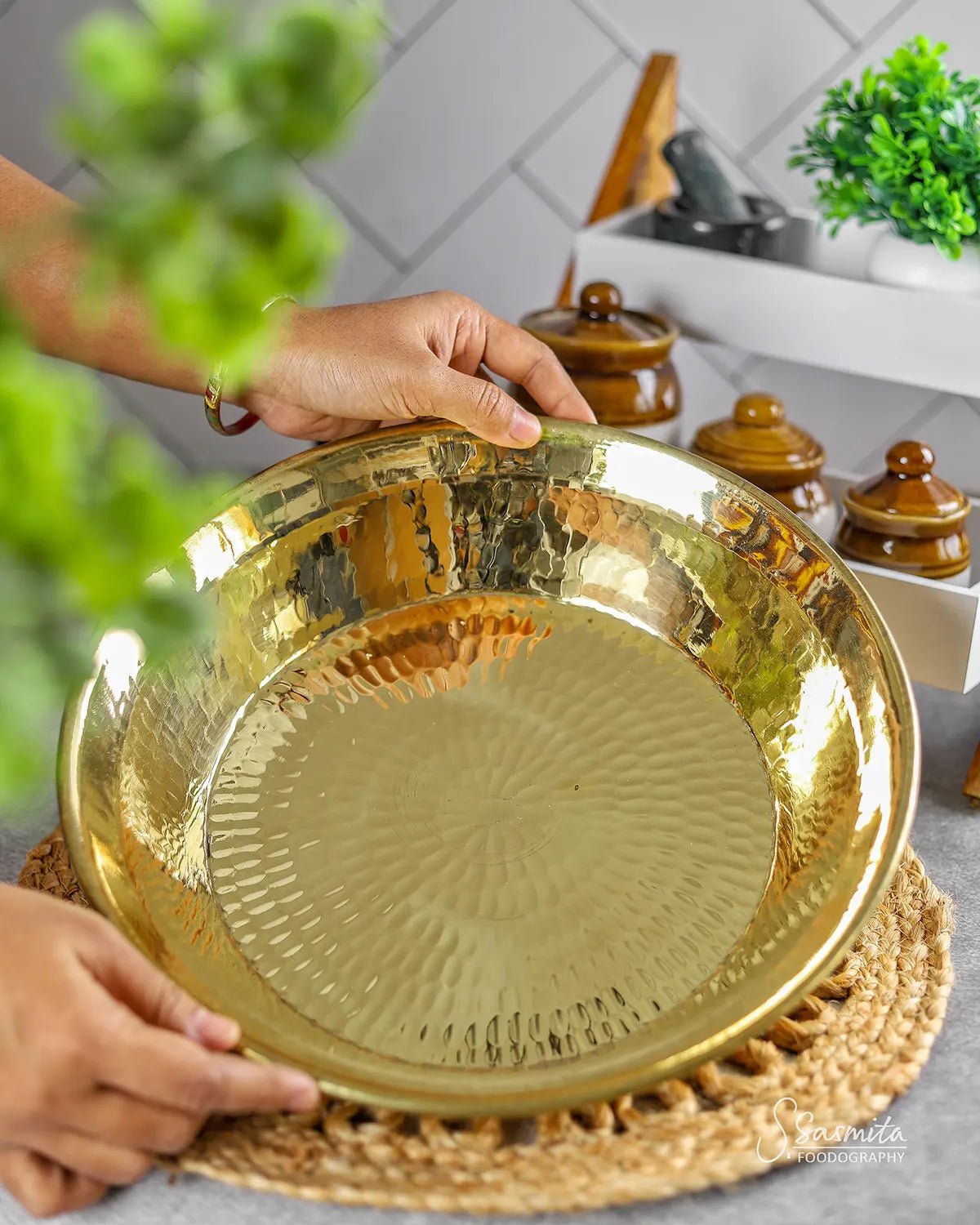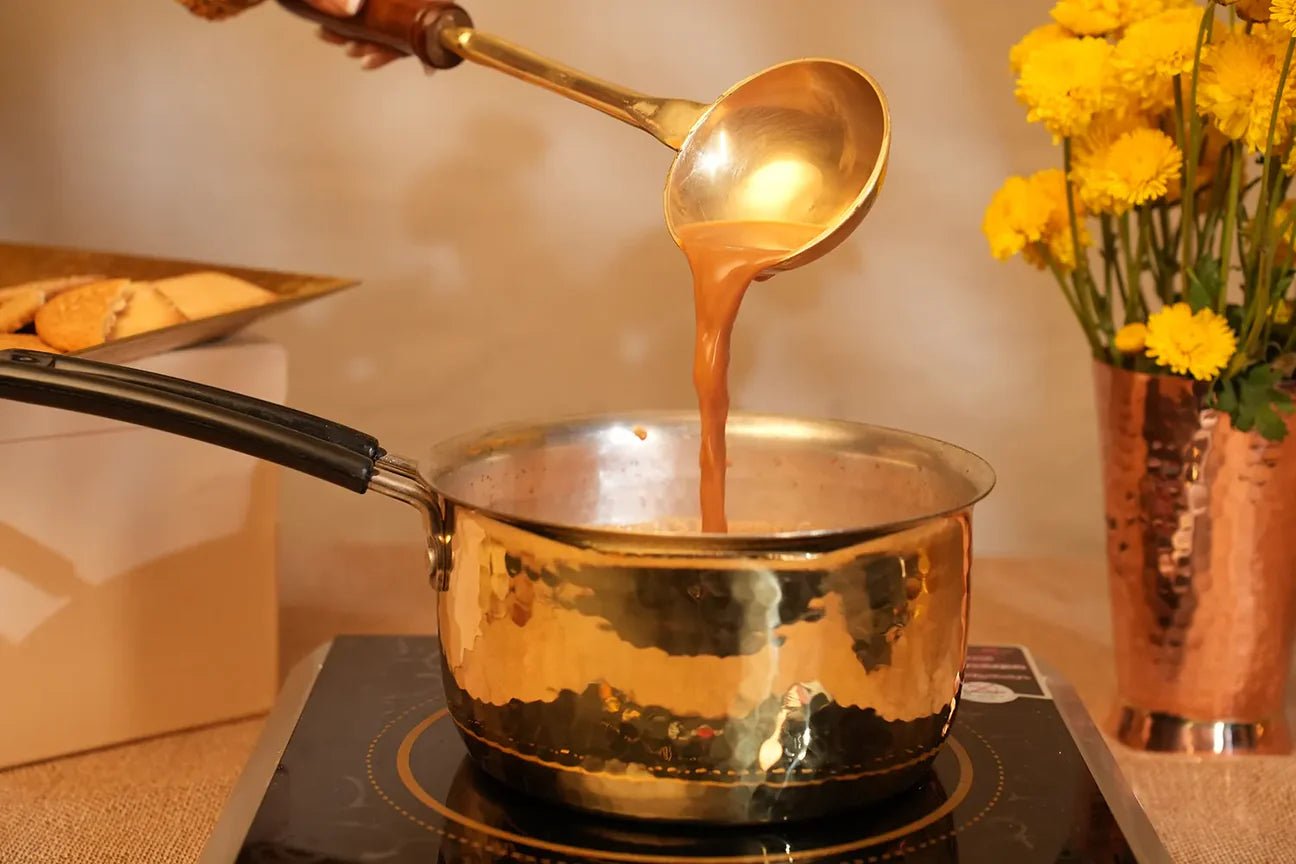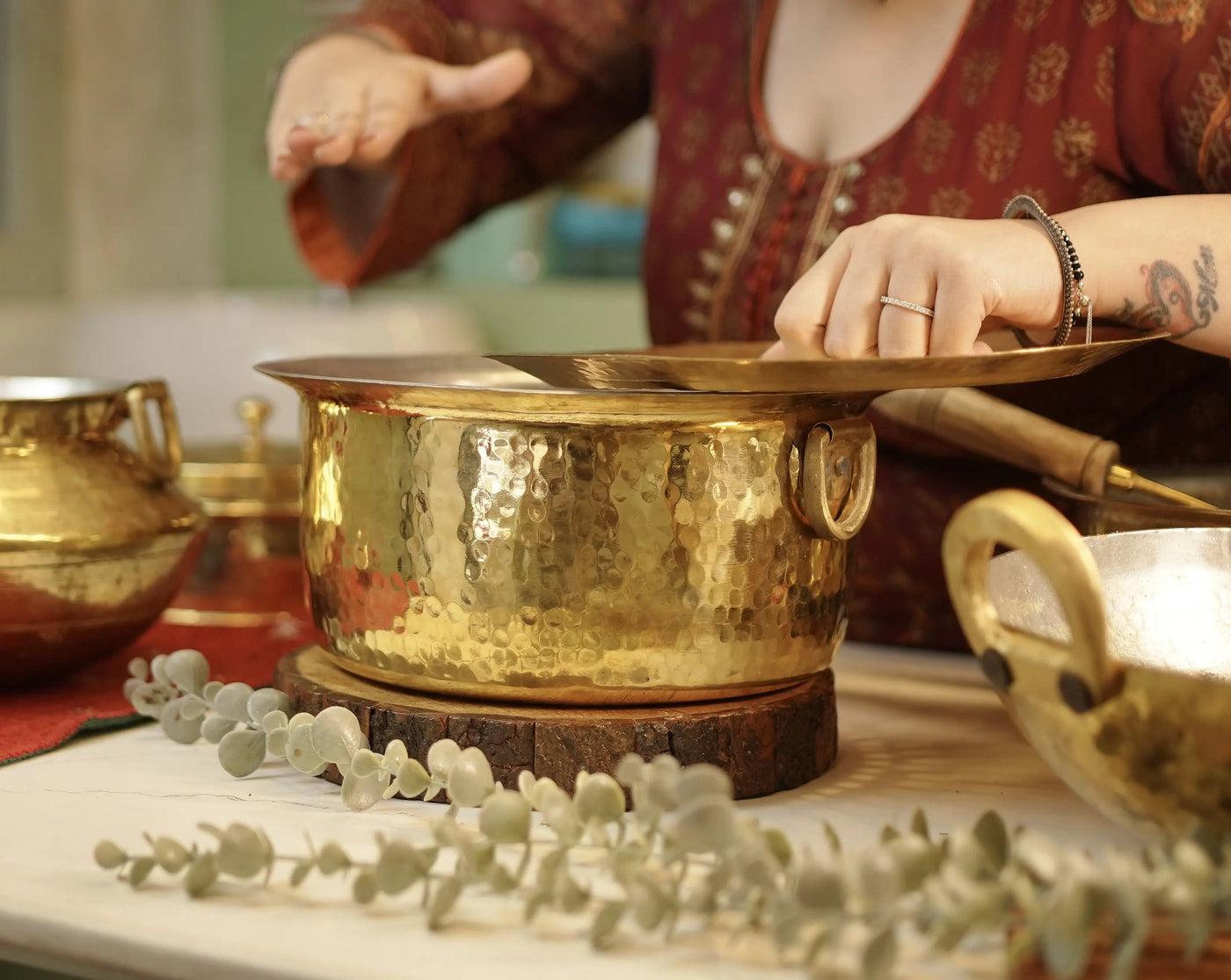Brass tawa has regained popularity as a traditional Indian cookware. A pure brass tawa is praised for its durability, health benefits and timeless appeal. It makes your food healthier and free of chemicals.Due to the increasing demand for these products, some sellers offer low-quality imitations. It is therefore important to understand the way to identify a brass tawa prior to purchasing one.
This guide will help you understand the basics of brass tawas, how to distinguish genuine brass from fake ones and what to look for when buying the right one for your kitchen.
What is a Brass Tawa
A Brass Tawa, which is a classic copper-zinc alloy is a flat or slightly concave-bottomed pan for cooking. Brass is renowned for its heat conductivity, durability and longevity. Brass cookware, which was traditionally used to make rotis and parathas in Indian cuisine, is being rediscovered for its classic beauty and health benefits.
Check our other products: Brass Hammered Degchi | Brass Saucepan | Brass Lagaan
Why choose a pure brass tawa?
It's important that you understand the reasons why pure brass tawa can be worth your investment.
-
Non Toxic Cooking : Pure brass pans are free of synthetic layers.
-
Heat Retention : Brass retains heat for longer and heats evenly, perfect for crisp dosas and rotis.
-
Ayurvedic benefits: Cooking in brass is said to improve digestion and immunity.
-
Durability: A tawa made of brass when maintained properly can last for many generations.
6 Key Checks to Identify Pure Brass Tawa
1. Consider the Finish and Color
Brass tawa is a distinctive yellowish-golden colour. It may have been coated or mixed with another metal if it appears too shiny. Avoid tawas that have an unusual colour or glossy appearance.
2. Test your magnetism
Brass is not magnetic. A magnet will stick to the tawa if it contains iron or steel. It's the simplest method of determining purity at a store or at home.
3. Weigh the weight
A pure brass tawa will be heavier than a fake or mixed metal variant. In your hands, it should feel sturdy and solid. It may not be real if it feels light.
4. Tin Coating is Inside
A tin coating is applied to the cooking surface of many traditional brass tawas. The tawa will have a shiny silver interior due to the coating. It prevents food from reacting and reacting with the brass. The absence of tin on older-styled tawas is a warning sign, unless they are designed for ceremonial purposes.
5. Sound Test
Pure brass makes a clear ringing noise when tapped. It sounds like a bell. It is an easy and quick way for chefs and artisans to identify real brass.
6. Request a Certificate of Purity or Assurance
Check if you are buying a brass tawa from an online store or a reputable shop. The seller should provide a guarantee or certificate of authenticity. The seller will state if the brass is 100% pure and if it was handcrafted or machine made.
Tips for Buying a Brass Tawa
1. Size and Thickness
Select a Brass tawa according to your cooking requirements. A tawa of 8-10 inches is ideal for rotis and parathas. A larger size is better for dosas. Make sure it is thick enough to hold heat and not burn food.
2. Handle Design
Other brass tawas have wooden handles for better grip. The wooden handles are safer and heat-resistant.
3. Handmade vs Machine-Made
Tawas made of brass are more durable and authentic.The slight imperfections are a sign of the handmade quality. The ones made by machines may appear perfect, but they could be less durable in the long run.
4. Reputation of the Seller
Purchase your Brass tawa only from a reputable seller, preferably one that specializes in ayurvedic or traditional cookware. Before purchasing online, check reviews, return policies and customer photos.
How To Maintain Your Brass Tawa
Keep your pure Brass Tawa in good condition
-
Use mild soap Avoid using steel scrubbers or abrasive cleaners.
-
Recoat it periodically If the item has a tin-coating, it should be re-coated at least every six to twelve months depending on its usage.
-
After washing, completely dry. This will prevent water stains.
-
Polish brass regularly. Make use of sea salt and lemon to keep the brass looking fresh.
Common Myths About Brass Tawa
Myth 1: Brass is not suitable for cooking
False. Since centuries, Indian kitchens have used pure brass with a tin-coated lining.
Myth 2: Brass Tawa Needs Too Much Maintenance
Brass cookware is not more difficult to maintain than cast iron and copper cookware.
Myth 3: All Brass Tawas are the same
Fake brass or mixed-metal tawas is common. Verify purity before purchasing.
Conclusion: Choose the Best Tawa for Pure Brass
brass pan are more than just cooking utensils. They're a symbol for sustainable kitchen practices, a return to the roots of cooking and a healthier way of cooking. If you know what to check for, it's easy to identify pure brass: weight, color, sound, the seller's authenticity, and coating.
A high-quality tawa made of pure brass will elevate your cooking and connect you to a rich culinary heritage that has endured the test time.







